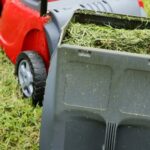Landscaping around large trees can greatly enhance the overall look of a yard or garden, and one way to achieve this is by using mulch. Mulching not only adds aesthetic appeal but also provides numerous benefits for the tree and surrounding plants.
In this article, we will explore the importance of mulching around large trees and how it can improve the landscape. Additionally, we will discuss various landscaping ideas, types of mulch, proper techniques for application, and seasonal maintenance tips to ensure that the mulched area remains healthy and visually appealing.
When it comes to landscaping ideas with mulch around large trees, choosing the right type of mulch is crucial. The selection process involves considering various factors such as moisture retention, weed suppression, and overall aesthetics. Furthermore, understanding how to prepare the area around the tree for mulching is essential for long-term success. This includes removing weeds and leveling the ground to ensure an even layer of mulch that complements the tree’s natural surroundings.
Properly applying mulch around a large tree requires specific techniques to prevent moisture issues and maintain tree health. Additionally, selecting complementary plants and incorporating decorative elements into the mulched area can further enhance its visual appeal. Throughout this article, we will provide detailed guidance on these topics to help you create a well-mulched landscape that not only looks beautiful but also supports the health and growth of your large tree.
Choosing the Right Mulch
When it comes to landscaping around large trees, choosing the right mulch is crucial for both aesthetic appeal and the health of the tree. There are various types of mulch available, each with their own set of pros and cons. By understanding the different options, homeowners can make an informed decision on what will work best for their landscape.
Organic Mulch
One popular option for landscaping around large trees is organic mulch, which includes materials such as wood chips, bark, straw, and leaves. Organic mulch is beneficial for the soil as it decomposes over time, adding valuable nutrients to the ground. Additionally, organic mulch helps retain moisture in the soil and provides insulation against extreme temperatures. However, organic mulch may require more frequent replacement than inorganic options due to decomposition.
Inorganic Mulch
In contrast, inorganic mulch such as rocks, gravel, or rubber can be long-lasting and low-maintenance. Inorganic mulch does not decompose like organic materials and can provide effective weed suppression. However, it does not contribute nutrients to the soil as organic mulch does. Additionally, inorganic mulches may not be as effective at retaining moisture in the soil compared to their organic counterparts.
By carefully weighing the pros and cons of each type of mulch, homeowners can select a product that suits their specific landscaping needs while also considering factors such as budget and maintenance requirements for landscaping ideas mulch around large tree.
Preparing the Area
Preparing the ground around a large tree for mulching is an important step in maintaining a healthy and aesthetically pleasing landscape. The area must be properly prepared to ensure that the mulch application is effective in promoting the tree’s health and enhancing the overall look of the space. This step-by-step guide will walk you through the necessary preparations, including weed removal, leveling, and measuring the area for optimal results.
- Weed Removal: Before applying mulch around a large tree, it is crucial to remove any existing weeds or unwanted vegetation from the area. Weeds can compete with the tree for nutrients and water, so thorough weed removal is essential. This can be done by manually pulling out weeds or using herbicides if necessary.
- Leveling: Once the area around the large tree is free of weeds, it should be leveled to create a uniform surface for mulch application. Use a rake or garden hoe to smooth out any uneven patches of soil and ensure that the ground is level. This will prevent moisture from accumulating in certain areas and help achieve an even distribution of mulch.
- Measuring the Area: To determine how much mulch is needed for the space around the large tree, it is important to measure the area accurately. Use a measuring tape or simply pace out the perimeter of the mulched area to calculate its square footage. This will allow you to purchase the right amount of mulch for proper coverage without overloading or underfilling.
| Preparation Step | Description |
|---|---|
| Weed Removal | Removing any existing weeds or unwanted vegetation from around large trees |
| Leveling | Smoothing out uneven patches of soil to create a uniform surface for mulch application |
| Measuring the Area | Determining square footage to calculate required amount of mulch for proper coverage |
Proper Mulching Techniques
When it comes to landscaping around large trees, proper mulching techniques are essential for maintaining the health and aesthetic appeal of the area. Mulch not only helps in retaining moisture and preventing weed growth but also provides a finished look to the landscape. Here are detailed instructions on how to apply mulch around a large tree, including the ideal thickness and distance from the trunk to prevent moisture and pest issues:
Choosing the right type of mulch is crucial for proper tree care and landscaping. Here are some options to consider when selecting mulch for large trees:
– Organic Mulch: Comprised of natural materials such as wood chips, bark, leaves, or compost. Organic mulch enriches the soil as it decomposes over time and provides a more natural look for landscaping.
– Inorganic Mulch: Made of materials like stones, gravel, or rubber. Inorganic mulch doesn’t break down like organic mulch and can provide a more permanent solution for landscaping around large trees.
Once you have chosen the appropriate mulch for your landscape project, follow these steps to apply it properly around a large tree:
1. Clear the Area: Remove any weeds or grass from around the base of the tree to create a clean surface.
2. Measure and Level: Use a shovel or rake to level out the ground around the tree, ensuring an even surface for applying mulch.
3. Determine Thickness: The ideal thickness for applying mulch around a large tree is 2-4 inches. Avoid piling up the mulch directly against the base of the trunk.
By following these proper mulching techniques, you can enhance the overall look of your landscape while promoting healthy growth for your large trees. Remember that proper maintenance throughout each season will ensure that your mulched area remains both beautiful and beneficial for your trees’ health.
Additionally, adding decorative elements such as rocks or garden ornaments to your mulched area can provide extra visual interest while contributing to better water retention and weed suppression in your landscaping project. With careful attention and creativity in design, you can create an inviting atmosphere with proper use of mulching ideas around your large trees.
Complementary Plants
When it comes to landscaping around large trees, the addition of complementary plants and flowers can enhance the overall aesthetic appeal of the area. Choosing the right plants that pair well with mulched areas is crucial for creating a visually pleasing and harmonious environment. This section will provide suggestions for low-maintenance options and those that thrive in shaded areas, allowing homeowners to create beautiful landscapes with minimal upkeep.
Low-Maintenance Options
For individuals seeking low-maintenance plants to accompany their mulched areas around large trees, options such as hostas, ferns, and ornamental grasses are ideal choices. These plants are known for their resilience and ability to thrive in shaded environments, requiring minimal care and attention. Additionally, ground cover plants like creeping phlox or vinca minor can be used to create a lush carpet of greenery that adds visual interest without demanding extensive maintenance.
Shade-Tolerant Species
In shaded areas created by large trees, certain species of flowering plants can flourish and add vibrant pops of color to the landscape. Astilbes, with their feathery plumes of flowers in various shades, are perfect for adding dynamic elements to mulched spaces. Similarly, impatiens, begonias, and hellebores are excellent choices for brightening up shaded areas while complementing the surrounding mulch. These shade-tolerant species provide an opportunity to introduce colorful blooms into the landscape without requiring excessive sunlight.
Benefit of Complementary Plants
Incorporating complementary plants and flowers into mulched areas around large trees offers numerous benefits beyond visual enhancement. The addition of these flora not only creates a balanced and cohesive design but also contributes to the overall health of the surrounding ecosystem.
Shade-loving plants play a role in providing ground cover, reducing soil erosion, aiding moisture retention, and attracting beneficial insects – all of which contribute to maintaining a thriving landscape with minimal effort from homeowners. By carefully selecting low-maintenance and shade-tolerant species that pair harmoniously with mulch, homeowners can achieve a beautiful landscape while minimizing maintenance needs.
Seasonal Maintenance
Proper maintenance of the mulched area around a large tree is crucial to ensure the health and aesthetic appeal of the landscape. Throughout the different seasons, it is important to adhere to specific care practices to address the changing needs of the tree and surrounding plants. One of the key aspects of seasonal maintenance is proper watering.
During the hot summer months, it is essential to provide adequate water for both the large tree and the mulched area. This can be achieved through deep, infrequent watering to encourage deep root growth and prevent moisture-related issues.
Another important facet of seasonal maintenance is weeding. As with any landscaped area, weeds can pose a threat to the health and appearance of the mulched space around a large tree. Regularly checking for and removing weeds helps prevent them from competing with desirable plants for nutrients and water. It also maintains a neat and tidy appearance for the overall landscape. In addition to weeding, adding fresh mulch as needed is also part of seasonal maintenance for this area.
Adding fresh mulch around a large tree provides numerous benefits such as weed suppression, soil protection, and moisture retention. Over time, natural processes like decomposition or weathering may deplete or break down existing mulch, necessitating its replenishment.
The frequency at which new mulch should be added depends on factors such as rainfall levels, sun exposure, and type of mulch used. By replenishing the mulch as needed, it ensures that all the benefits associated with its presence are continually provided to maintain optimal conditions for plant growth and tree health.
Creative Design Ideas
Incorporating decorative elements into the mulched area around a large tree can significantly enhance the aesthetic appeal of the landscape. When considering landscaping ideas, mulch around large trees can create a visually appealing focal point in the yard, and adding decorative elements further elevates the overall look. Rocks, landscape edging, and garden ornaments are popular choices for enhancing mulched areas and creating a cohesive and beautiful outdoor space.
Rocks are versatile decorative elements that can be strategically placed within the mulched area to add texture and visual interest. Large rocks can serve as natural focal points or seating areas, while smaller stones can be used to create defined pathways or borders around the tree. When choosing rocks for landscaping around large trees, consider factors such as color, size, and shape to complement the existing design elements in the yard.
Landscape edging is another effective way to enhance the appearance of a mulched area around a large tree. Edging materials such as bricks, pavers, or metal strips provide a clean border that helps maintain the shape of the mulched area and prevents erosion.
Additionally, landscape edging creates a polished look that adds structure and definition to the overall landscape design. When selecting landscape edging for your mulched area, consider materials that complement the existing hardscape features in your yard for a cohesive look.
Garden ornaments are an excellent way to inject personality and style into the mulched area around a large tree. Decorative elements such as statues, birdbaths, or fountains can serve as focal points that draw attention to the landscaped space.
Additionally, whimsical garden ornaments like wind chimes or gazing balls can add an element of playfulness and visual intrigue to the mulched area. When incorporating garden ornaments into your landscape design, ensure that they complement the overall style of your outdoor space and enhance its visual appeal.
| Decorative Element | Use |
|---|---|
| Rocks | Add texture and visual interest |
| Landscape Edging | Create clean border and prevent erosion |
| Garden Ornaments | Inject personality into landscaped space |
Benefits of Mulching
In conclusion, landscaping around large trees with mulch offers numerous benefits for the overall health and appearance of the tree and surrounding area. By exploring different types of mulch suitable for this purpose and following proper techniques for application, homeowners and gardeners can greatly enhance their outdoor spaces. Not only does mulching help suppress weeds and retain moisture, but it also provides protection to the soil and promotes improved tree health and growth.
The selection of the right mulch is crucial to achieve these benefits, as organic or inorganic options each have their own advantages and disadvantages. Proper preparation of the ground around the large tree is also essential, including thorough weed removal, leveling, and careful measurement of the area to ensure even coverage. Additionally, incorporating complementary plants into the mulched area can further enhance its appeal while providing a balanced ecosystem that benefits both the tree and surrounding greenery.
By considering seasonal maintenance tips and getting creative with design ideas such as decorative elements like rocks or garden ornaments, individuals can elevate the aesthetic appeal of their landscape while reaping all the advantages that mulching provides. Overall, by investing time in landscaping ideas for mulch around large trees, homeowners can create a visually stunning and healthy environment that will be enjoyed for years to come.
Frequently Asked Questions
Should You Mulch Around Large Trees?
Mulching around large trees is generally a good practice for several reasons. It helps retain moisture in the soil, regulates soil temperature, reduces competition from grass and weeds, and protects the tree’s roots from lawnmower damage. However, it’s important to mulch properly and avoid creating “mulch volcanoes” which can suffocate the tree’s roots.
How Do You Landscape Around a Large Tree?
When landscaping around a large tree, it’s important to keep the tree’s health in mind. Avoid digging or disturbing the soil around the tree as much as possible to prevent damage to its roots.
Instead, consider using plants that are shade-tolerant and don’t require a lot of water, or simply mulch the area around the tree to create a clean and low-maintenance look.
What Is the Proper Way to Put Mulch Around a Tree?
The proper way to put mulch around a tree involves creating a mulch ring with a diameter of about 3-4 feet but leaving space around the trunk itself. The mulch layer should be no more than 2-4 inches deep and should be spread evenly without forming mounds against the trunk.
This will allow water and air to reach the roots while still providing the benefits of mulching such as moisture retention and weed suppression.

Welcome to my gardening blog! I am passionate about plants and enjoy sharing my knowledge and experiences with others. In this blog, I will write about everything related to gardening, from tips on how to get started to updates on my own garden projects.





